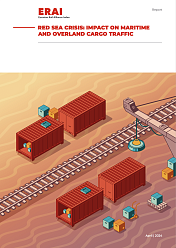Thanks!
We will contact you.

China is actively increasing its presence in the Arctic, using cooperation with Russia as a springboard to consolidate its status as a global power

The Red Sea crisis was a new challenge for maritime shipping, which begs the question of whether the maritime shipping market will be able to adapt to new circumstances or whether the unstable situation in the Red Sea will push shippers to switch to rail transport.